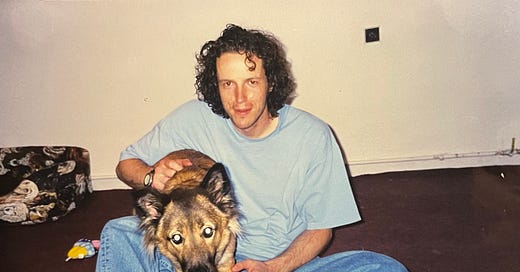Yom HaZikaron and the Culture of Sacred Pause
Grief Without Spectacle: What Israel Teaches About Remembering
The Day of Remembrance—Yom HaZikaron—is Israel’s official Memorial Day, dedicated to honoring the memory of those who died defending the State of Israel and those killed in acts of terror against Jews, both in Israel and abroad.
In Hebrew, it is called:
יום הזיכרון לחללי מערכות ישראל ונפגעי פעולות האיבה
“The Day of Remembrance for the Fallen Soldiers of the Wars of Israel and the Victims of Terrorism.”
But it is not like the military memorials of many other nations.
It is not a day of flags and parades. It is a day of mourning etched into the national psyche, observed with deep, communal grief and sacred pause.
Yom HaZikaron is held on the 4th of Iyar, which typically falls in April or May, depending on the Hebrew calendar.
It comes immediately before Yom HaAtzmaut, Israel’s Independence Day—placing mourning and celebration back-to-back, by design.
The message is clear: freedom came at a cost. Independence was paid for in blood. We will never forget.
In Israel, the entire country enters a state of national mourning.
A two-minute siren sounds across the land twice—once at nightfall and again in the morning.
Everything stops. Cars, conversations, business. People stand in silence.
Ceremonies are held in cemeteries, schools, military bases, and communities.
Television and radio programming changes completely—no entertainment is broadcast, only documentaries, music, and memorial content.
Names of the fallen are read aloud. Stories are told. Families gather at gravesites.
It is intimate and national at once.
Nearly every Israeli has a direct connection to someone lost—there are no degrees of separation.
Who Is Remembered?
Fallen soldiers of the Israel Defense Forces (IDF) and other security services—from 1948 to the present.
Victims of terrorism, including those killed in attacks in Israel and abroad, simply for being Jewish.
In recent years, the scope has widened to honor:
• Victims of antisemitic violence.
• Soldiers who died by suicide, especially due to PTSD.
• Those whose deaths weren’t in battle, but in service.
What Is Its Spiritual and Cultural Significance?
Yom HaZikaron is not about glorifying war.
It is about remembering the cost of Jewish sovereignty, of living as Jews in the world, and of refusing to take survival for granted.
Spiritually, it resonates with the Jewish value of “Zachor”—Remember.
To remember the individual lives, not just numbers.
To grieve together.
To honor sacrifice not with sentiment, but with responsibility.
The Transition to Independence Day
As night falls, Yom HaZikaron ends and Yom HaAtzmaut (Independence Day) begins.
The shift is abrupt and jarring—from sirens to fireworks, from silence to celebration. And it’s meant to feel that way.
It’s a national ritual of emotional whiplash, honoring the truth that joy and grief often coexist.
The State of Israel was not handed to the Jewish people—it was fought for, protected, and continues to be paid for with lives.
American military culture has its own systems of remembrance—some formal, some deeply personal—that echo the reverence found in days like Yom HaZikaron, though they manifest differently in tone and structure.
In the U.S., remembrance is ongoing on installations—not limited to holidays like Memorial Day or Veterans Day, but woven into the daily rhythm of military life.
The Empty Chair and Table: Constant Vigil
On nearly every American military installation, there is a POW/MIA table—also called the Missing Man Table—placed in dining facilities and ceremonial halls.
It’s a small, solitary table set with a white tablecloth (purity of intention), a single red rose (bloodshed and sacrifice), a lemon slice (bitterness of loss), salt (tears of families), an inverted glass (absence of the fallen), and an empty chair for the spirit who can not rest.
This is not decoration. It is a perpetual reminder of those who never came home. It stands in silence but speaks volumes.
Reveille and Retreat: A Daily Pause
At most installations, Reveille is played at the beginning of the duty day and Retreat gets played at sunset.
When the music plays, service members stand at attention. Vehicles stop, drivers exit and face the flag. Salutes are rendered.
It’s a daily ritual of discipline and reverence, acknowledging the flag, the mission, and those who serve—and have died—for it.
In a way, it’s a kind of collective Zachor.
Memorial Walls, Stones, and Gardens
Installations often maintain memorial sites including walls engraved with the names of fallen unit members, trees planted for every loss in a given command, benches or stones placed by surviving comrades or Gold Star families.
These sites are not just for ceremony; they are visited in quiet moments by those who remember faces, not just names. They’re places for reflection, grief, and resolve.
The Culture of “Never Forget”
In many units, particularly among combat veterans, “never forget” is not a motto—it’s a code of conduct.
Tattoos with fallen friends’ initials or death dates, bracelets worn daily, year after year, private toasts to the dead on their birthday or day of passing, and carrying photos or letters in rucksacks, even on deployment, are ways members personally affected remain present to national sacrifice.
This is not about nostalgia. It’s spiritual continuity—an embodied promise that their life mattered, and still matters.
So while the U.S. military doesn’t blow sirens across the nation or close media channels for a day of mourning, remembrance is embedded in the infrastructure of its spaces, the discipline of its rituals, and the daily gestures of its people.
The American military ethos may not ritualize grief in the same way Israel does, but it carries it quietly, constantly, and with profound respect.
Today, all people have to remember.



